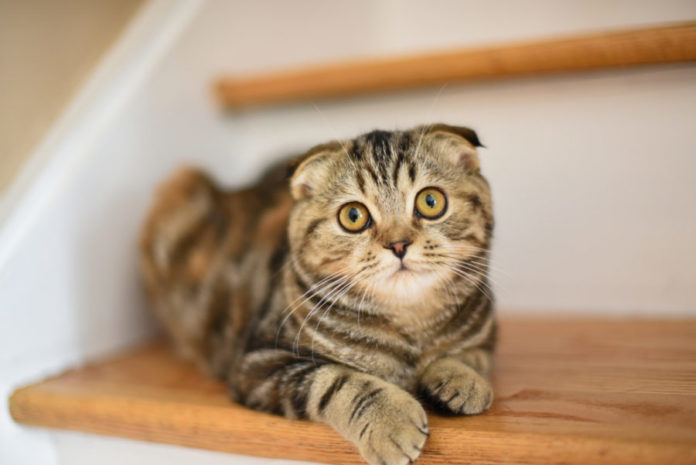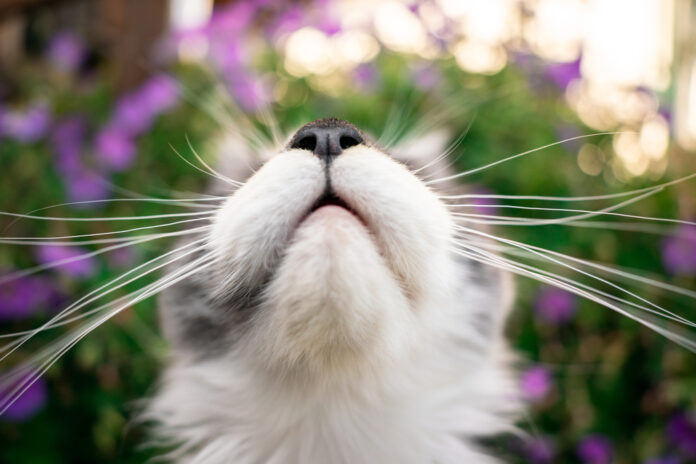Common skin problems in cats

From allergic dermatitis to rodent ulcers, a variety of skin problems can afflict cats. Here’s a look at the most common, along with their causes and treatments.
Although cats are good at hiding signs of illness, skin problems are quite obvious. They’re also quite common. According to last year’s State of Health pet survey, skin disease is among the top ten complaints in cats. Many skin conditions can afflict felines, including allergic dermatitis, which tops of the list, along with abcesses, “rodent ulcers” and more.
Allergic dermatitis
Allergic dermatitis results in itching and scratching and is the most common feline skin complaint, with fleas and flea allergies topping the list of causes. Environmental and food allergies can also cause this type of skin problem.
Regardless of cause, allergic dermatitis frequently manifests as “miliary dermatitis”, which is not a specific disease but rather a disease complex. The hallmark of miliary dermatitis (or scabby cat disease) is a red crusty rash around the head, neck and back, accompanied by intense itching. Often, people will feel bumps all over the cat before they see the rash. It is not unusual for the cat to lose fur.
The underlying cause must be treated along with the symptoms. This may not be easy since the symptoms of any feline allergy may look the same; however, here are a few helpful clues.
1. Flea allergy requires the presence of fleas in the environment, but this is not as obvious as you may think. Cats do such a good job of grooming themselves that they may groom out all the fleas. However, the flea droppings may still be evident in the coat.
2. Food allergy, caused by a reaction to one or more ingredients in the cat’s food, can be a source of non-seasonal itching, generally involves the head and ears, and may be accompanied by vomiting or diarrhea.
3. Environmental allergy, caused by a reaction to substances in the environment such as pollens, mold or dust mites, may look like either of the above, or may take on the form of excessive grooming.
Treatment depends on cause
The treatment for itchy cats hinges on a proper diagnosis of the cause, and treating or avoiding the source.
- If fleas are the problem, using a flea comb and bathing with herbal flea shampoo is helpful. Environmental control with food-grade diatomaceous earth is effective, while frequent vacuuming will remove flea larva and eggs. Herbal and homeopathic remedies can also help, but be sure to work with a holistic veterinarian. Putting cedar chips in your yard can reduce outdoor fleas.
- For cats with food allergies, an elimination diet is needed to find the source of the problem. Work with a veterinarian to do this correctly.
- Environmental allergies can be minimized by reducing or eliminating exposure to irritating substances. Check around your house for allergens such as mold, vacuum and dust your home regularly, and wash bedding often.
Don’t forget diet
A basic treatment for any itchy cat involves an anti-inflammatory diet. These diets are low in carbohydrates, particularly grains and potato, and higher in protein. Chinese food therapy also recommends the avoidance of “heating” proteins, so eliminate chicken and lamb from the cat’s diet. Omega 3 fatty acids can be used to decrease inflammation. The best sources are fish or marine oil — flaxseed oil is not metabolized by cats.
Chinese food therapy recommends the avoidance of “heating” proteins, so eliminate chicken and lamb from his diet.
Lumps and bumps
Bumps, masses or skin swellings represent about one-third of feline skin problems. They should be taken seriously, and often need to be diagnosed using special tests such as aspirates or biopsies.
Many skin swellings in cats are caused by abscesses. Often, a swollen area is really a large pocket of pus under the skin caused by a bite or scratch. The cat may run a high fever and feel unwell. Unlike cancers, these swellings are painful and need to opened and drained.
Antibiotics may be prescribed, although a holistic veterinarian may prescribe an herbal remedy or hot compressing of the area to eliminate the infection. If your cat has a sudden swelling, and seems to be in pain or lethargic, have your veterinarian check him out as soon as possible.
Rodent ulcers and other sores
Another common skin condition in cat involves red lesions on the face or groin area. If the upper lip is involved, and swelling is present, it could be a condition called “rodent ulcers”. Despite the name, it’s not caused by rodents but is a manifestation of allergic skin disease.
Common causes, other than allergies, can be fungal infections such as ringworm, as well as autoimmune disease or even cancer.
White cats with sores on the ears or face have a higher than normal incidence of squamous cell carcinoma, so don’t ignore these little red sores. Any persistent sores on any cat, regardless of coat color, require medical attention.
Skin diseases are common in cats, but with proper diet and care, they can usually be treated with good results.



